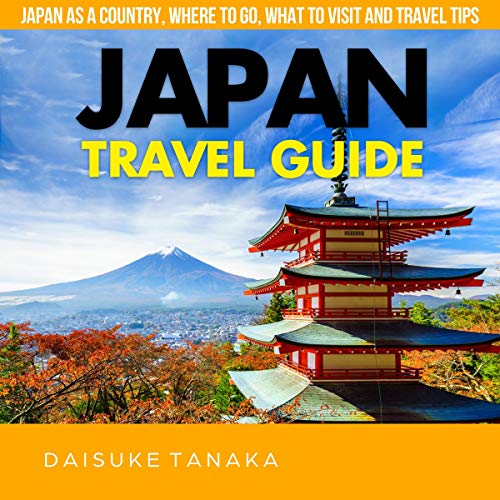Win a Free Trip to Japan!
Experience cherry blossoms and ancient temples
Traveling in Japan can be a rewarding experience, thanks to its efficient and extensive transportation system. Whether you’re hopping on a bullet train or navigating local subways, understanding how to get around is crucial. This Japan Travel Guide will provide essential tips and insights, helping you make the most of your journey. From purchasing a Japan Rail Pass to mastering urban transit, you’ll discover practical advice that eases your travel experience. Additionally, we’ll cover cultural etiquette and mobile apps that enhance your navigation through this fascinating country.
Understanding Japan’s Transportation System
Navigating Japan’s transportation system requires an understanding of its efficiency and organization. This Japan Travel Guide will provide you with essential insights to help you travel seamlessly throughout the country.
Key Features of Japan’s Transportation System:
- Punctuality: Trains and buses run on time, often down to the minute. This reliability makes planning your itinerary easier.
- Diversity of Options: From high-speed Shinkansen (bullet trains) to local buses and taxis, you have various choices to suit your travel needs.
- Cleanliness and Safety: Public transport in Japan is known for its cleanliness and safety, ensuring a comfortable travel experience.
- Signage: Most stations provide bilingual signs, making navigation user-friendly for international travelers.
Comparison of Transportation Types:
| Mode of Transport | Speed | Cost | Ideal For |
|---|---|---|---|
| Shinkansen | Very Fast | High | Long-distance travel |
| Local Trains | Moderate | Moderate | City commuting |
| Subways | Moderate | Low | Urban exploration |
| Buses | Variable | Low | Areas not served by trains |
| Taxis | Variable | High | Late-night travel or direct routes |
Using this Japan Travel Guide, you can choose the most effective mode of transportation for any situation, ensuring a smooth and enjoyable journey throughout this fascinating country. Prepare to embrace the unique and efficient transportation experience that Japan offers!

Types of Transportation Available in Japan
When exploring Japan, having a solid understanding of the various transportation options can significantly enhance your travel experience. This Japan Travel Guide will highlight the main types of transportation available, making it easier for you to navigate the country.
1. Trains
- Shinkansen (Bullet Trains): High-speed trains that connect major cities, known for punctuality and comfort.
- Local Trains: Affordable options for short distances, ideal for exploring regional attractions.
- Private Railways: These often connect to tourist spots and can provide a scenic journey.
2. Subways
- Major cities, such as Tokyo and Osaka, feature extensive subway networks that are the backbone of urban travel.
- Advantages: They operate frequently, and maps are available in English.
3. Buses
- City Buses: Cover areas not serviced by trains; useful for reaching rural destinations.
- Long-Distance Buses: Economical option for budget travelers, connecting cities and offering overnight services.
4. Taxis
- Widely available but can be expensive. Always look for taxi stands or use ride-hailing apps.
5. Bicycles
- Rent a bike in urban areas for a unique way to explore neighborhoods and sights.
Understanding these transportation options is vital as you plan your itinerary with this Japan Travel Guide. Harness the variety available to create an unforgettable journey!
Buying a Japan Rail Pass
When planning your journey through Japan, purchasing a Japan Rail Pass can be a game changer. This pass provides unlimited travel on most JR trains, including the famous Shinkansen (bullet train), allowing you to explore the country efficiently and affordably. Here are some key points to consider when buying a Japan Rail Pass:
- Eligibility: The Japan Rail Pass is available only to foreign tourists. You will need to show a passport and a temporary visitor visa to qualify.
-
Types of Passes:
- Ordinary Pass: Ideal for most travelers who want to experience standard services.
- Green Pass: Offers access to more spacious and comfortable Green Cars for a premium experience.
- Duration Options: Choose from several durations, including 7, 14, or 21 consecutive days. This flexibility allows you to tailor the pass to fit your travel itinerary.
- Purchasing: You can buy the pass online before your trip or at select locations in Japan. However, buying it in advance often provides better deals.
- Activation: After purchasing, visit a JR ticket office to activate your pass. Remember, you must do this before your first train journey.
Using this Japan Travel Guide, take advantage of the Japan Rail Pass for an unforgettable travel experience. The high-speed trains will connect you to diverse landscapes and remarkable cities seamlessly, making your trip even more enjoyable.
Using Local Trains and Subways
When delving into Japan’s vibrant cities, mastering the local train and subway systems becomes essential. These transport options provide efficient ways to explore while complementing your Japan Travel Guide. Here’s what you need to know:
- Extensive Network: Japan boasts one of the world’s most comprehensive train networks. Major cities like Tokyo, Osaka, and Kyoto feature intricate subway systems, making it easy to reach any destination.
-
Types of Trains:
- Subways: Best for navigating urban areas; frequent services ensure you rarely wait long.
- Local Trains: Connect suburbs with city centers; while slower than express trains, they are often less crowded.
-
Tickets & Fares:
- Purchase single-journey tickets or prepaid cards (e.g., Suica or Pasmo) for convenience.
- Fares vary by distance but expect to pay between ¥200 and ¥500 for most local trips.
-
Navigation Tips:
- Maps and Signage: Clear signage in English helps navigate stations easily.
- Apps: Utilize mobile apps for real-time updates and route planning.
By incorporating these tips into your Japan Travel Guide, you will enjoy smoother journeys and experience the efficiency that Japan’s local trains and subways offer.

Getting Around Urban Areas
Navigating urban areas in Japan can be an exciting adventure due to the extensive and efficient public transportation system. This Japan Travel Guide highlights essential tips to help you make the most of your travels in bustling cities like Tokyo, Osaka, and Kyoto.
Public Transportation Options
- Subways: Every major city boasts an intricate subway system. For instance, Tokyo’s subway is one of the most punctual in the world.
- Buses: Local buses serve areas not covered by rail and offer an excellent way to explore neighborhoods.
- Taxis: Though more expensive, taxis can be convenient for late-night trips or when you are carrying heavy luggage.
Getting a Day Pass
Consider investing in a day pass for unlimited travel within specified zones. This option saves you money and ensures hassle-free transit. Here’s a quick comparison:
| Transport Type | Cost Approximation | Convenience |
|---|---|---|
| Subway | ¥500/day | Fast, frequent services |
| Bus | ¥400/day | Covers wider areas |
| Combination Pass | ¥900/day | All-in-one convenience |
Navigation Apps
Make use of popular mobile apps like Google Maps or Citymapper to help plan your routes. These tools provide real-time updates and alternative routes.
In summary, utilizing a combination of subway, bus systems, and mobile navigation will vastly improve your experience in urban Japan. Following this Japan Travel Guide will ensure a smooth journey through Japan’s vibrant cities.
Navigating Airports and Shuttles
When traveling to Japan, navigating airports and shuttles efficiently can significantly enhance your experience. As outlined in this Japan Travel Guide, understanding your options helps minimize stress upon arrival.
Major Airports
Japan boasts several international airports, the most notable being:
- Narita International Airport (NRT) – Located near Tokyo, ideal for long-haul flights.
- Haneda Airport (HND) – Closer to the city center, perfect for domestic flights.
- Kansai International Airport (KIX) – Serves Osaka and nearby cities.
Shuttle Services
Upon arrival, you have various shuttle options to connect to the city:
- Airport Limousine Buses: Convenient and direct, these buses serve major hotels and transport hubs.
- Train Services: The Narita Express and the Kansai Airport Rapid Service offer quick connections to the city.
| Airport | Shuttle Option | Travel Time | Cost |
|---|---|---|---|
| Narita | Airport Limousine Bus | 60-90 minutes | ¥3,000-¥4,000 |
| Haneda | Tokyo Monorail | 20-30 minutes | ¥500-¥600 |
| Kansai | Kansai Airport Rapid Service | 55 minutes | ¥1,200 |
Tips for a Smooth Ride
- Purchase tickets in advance: Avoid lines by booking online or at kiosks.
- Understand your route: Familiarize yourself with maps and schedules to navigate easily.
- Keep your itinerary handy: This aids shuttle staff in assisting you effectively.
With these tips from the Japan Travel Guide, you’ll navigate airports and shuttles like a pro!
Tips for Traveling with Luggage
Traveling in Japan can be a breeze, especially when you follow these essential tips for managing your luggage. When utilizing your Japan Travel Guide, keep the following strategies in mind:
- Pack Light: Japan’s public transportation is well-organized but can get crowded. Aim for a suitcase that is manageable and easy to carry, ideally around 20-25 inches.
- Use Luggage Delivery Services: Consider Takyubin, a convenient luggage delivery service that transfers bags directly to your hotel. This way, you can travel light while enjoying your journey.
- Choose the Right Time: If you’re using local trains or subways, avoid peak hours (7:30-9:30 AM and 5:00-7:00 PM) when commuters fill the stations.
- Luggage Storage: Utilize coin lockers available at major train stations. Prices vary based on size but typically range from 300 to 800 yen. This allows you to explore cities unencumbered.
- Traveling with Large Items: If you have oversized luggage, check with your transport provider. Recent policies may allow for additional fees to be paid for large bags.
- Know Your Routes: Familiarize yourself with station layouts using your Japan Travel Guide to minimize time spent dragging heavy bags.
By following these tips, you’ll navigate Japan’s transport system with ease and enjoy a more comfortable travel experience.

Mobile Apps for Transportation in Japan
In today’s digital age, using mobile apps can significantly enhance your travel experience in Japan. A comprehensive Japan Travel Guide frequently highlights essential apps that make navigating Japan’s complex transportation system easier and more efficient. Here are some top picks:
- Google Maps: Reliable for directions and transit schedules, it includes real-time updates and walking routes.
- HyperDia: This app provides detailed train schedules, routes, and timing. It’s perfect for planning trips involving multiple train transfers.
- Navitime: Featuring extensive public transport data, it helps you choose the fastest and most convenient routes. The English version is user-friendly for travelers.
- JapanTaxi: If you prefer taxis, this app allows you to book rides easily, showing nearby cabs in real-time.
Comparison of Mobile Apps
| App Name | Features | Language Support | Cost |
|---|---|---|---|
| Google Maps | Directions, public transport info | Multi-language | Free |
| HyperDia | Detailed train schedules | English, Japanese | Free (with ads) |
| Navitime | Route optimization, extensive data | English, Japanese | Free, in-app purchases |
| JapanTaxi | Easy taxi bookings, real-time tracking | English, Japanese | Free |
Each app accommodates various needs, consolidating information to keep your travels smooth. Including these in your Japan Travel Guide ensures you’ll always find your way, whether you’re hopping on a train or catching a taxi. Embrace the technology and enjoy seamless travels in Japan!
Cultural Etiquette on Public Transport
When using public transport in Japan, understanding the cultural etiquette is essential for a smooth experience. This Japan Travel Guide highlights key behaviors that align with local customs:
- Be Quiet: Japanese culture values tranquility, particularly in crowded spaces. Lower your voice and avoid loud conversations.
- Priority Seating: Respect designated priority seats, which are reserved for the elderly, disabled, pregnant women, and those with small children. If these seats are occupied, give your seat if necessary.
- No Eating or Drinking: Most forms of public transportation, like trains and buses, discourage eating and drinking. Keep snacks for your destination to maintain cleanliness.
- Phone Etiquette: Use your phone discreetly. If you need to take a call, step outside the vehicle to avoid disturbing fellow passengers.
- Form a Queue: When waiting for a train or bus, line up in an orderly fashion. This ensures a smoother boarding process and reflects respect for others.
- Avoid Blocking Doors: Step aside to allow others to exit before you enter. Occupying the door area may cause congestion.
By following these cultural etiquette tips in your Japan Travel Guide, you’ll not only enhance your travel experience but also show respect for local customs, making interactions with locals more pleasant.
Safety and Accessibility Considerations
When traveling in Japan, safety and accessibility are paramount. Japan’s transportation system is known for its efficiency, but it also prioritizes the wellbeing of all passengers. Here’s what you need to know, as outlined in this Japan Travel Guide:
Safety Features:
- Cleanliness: Trains and stations are generally spotless, fostering a safe environment.
- Security: Many stations feature surveillance cameras, and staff are readily available for assistance.
- Emergency Protocols: Familiarize yourself with emergency exits and procedures in case of natural disasters, like earthquakes.
Accessibility Options:
For travelers with mobility challenges, Japan’s transport system offers various services:
- Wheelchair Accessibility: Most major train stations and public transport options include elevators and ramps.
- Priority Seating: Designated areas on public transport for elderly and disabled passengers ensure a comfortable ride.
- Station Assistance: Many stations have staff trained to assist individuals requiring extra help.
Considerations:
- Navigating Busy Times: Public transportation can become crowded, especially during rush hours. Plan your travel times accordingly.
- Language Barriers: Visual aids and multilingual signs ease navigation, but consider downloading a translation app for smoother communication.
Overall, as highlighted in this Japan Travel Guide, Japan is a safe and accessible place for all travelers, ensuring a pleasant experience while exploring the country’s rich culture and beautiful landscapes.
Frequently Asked Questions
What are the most popular transportation options in Japan for travelers?
In Japan, the most popular transportation options for travelers include the Shinkansen (bullet train), local trains, buses, and taxis. The Shinkansen is renowned for its speed and efficiency, connecting major cities like Tokyo, Osaka, and Kyoto. Local trains and subways are ideal for navigating urban areas and are highly punctual. Buses cover regions where trains may not, providing access to rural attractions. Taxis, while more expensive, are convenient for door-to-door travel.
How does the Japan Rail Pass work, and who can use it?
The Japan Rail Pass is a special ticket available exclusively to foreign tourists visiting Japan, allowing for unlimited travel on most JR trains across the country, including the Shinkansen, for a set period, typically ranging from 7 to 21 days. It must be purchased before arriving in Japan and can be activated upon arrival. The pass represents significant savings for those planning to travel extensively between cities, making it an essential option for travelers aiming to explore Japan’s diverse regions.
Is it necessary to book train tickets in advance?
While it is not mandatory to book train tickets in advance in Japan, it is highly recommended for popular routes, especially on the Shinkansen during peak travel times or holidays. Booking in advance guarantees you a seat and can lead to better prices. For local trains and less busy routes, tickets can usually be purchased on the day of travel without issue at the station. In addition, tourists can benefit from advance ticket purchases for specific sightseeing trains that may sell out.
What is the etiquette for using public transportation in Japan?
Etiquette on public transportation in Japan is very important. Travelers should observe silence, refrain from talking on mobile phones, and avoid eating or drinking on most trains. It’s courteous to give up seats for the elderly, pregnant women, or those in need. Additionally, maintaining personal space is highly valued, and one should avoid pushing or crowding fellow passengers. Understanding and following these social norms enhances the travel experience and shows respect to local customs.
Are there apps available to help navigate public transportation in Japan?
Yes, there are several useful apps designed to aid travelers in navigating Japan’s complex public transportation system. Apps such as Hyperdia provide detailed train schedules, platform information, and route planning, while Google Maps can also assist with directions and real-time transit updates. Moreover, the Japan Transit Planner app is specifically tailored for navigating train services. These apps make it easier to understand transfer points, ticket pricing, and train timings, ensuring a smoother travel experience.
